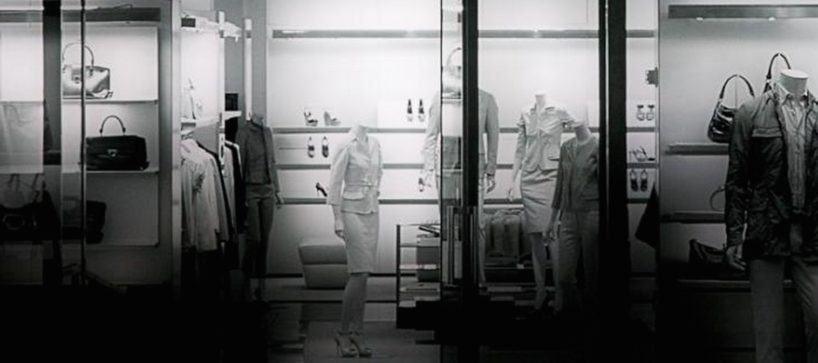Imprint, 20 September 2011

Sep 20 2011 in Features by Becky Loi, Reporter
Originally posted in IMPRINT
Over 60 unique and fascinating artwork on display at the Rethinking Art and Machine (RAM) exhibition
From inside giant red glasses mounted on its body of a black steel tripod, a pair of similarly over-sized eyes briefly stares at the people walking in before shifting its gaze around the room, also filled with other contraptions with giant eyes.
Entering the room, one might imagine being on a sci-fi movie set or a futuristic computer lab, but the bizarre android-like creature is actually the artist Alan Rath’s Voyeur III, one of the works in downtown Kitchener’s The Museum’s latest art exhibition, Rethinking Art and Machine (RAM). Running from this Sept. 15 (Friday) to Jan. 22 2012, it boasts a veritable line-up of both Canadian and international artists from the United States, Germany and Israel.
Other than the sculptures by Rath, visitors would also be enthralled by Peter Vogel’s interactive, 13-footlong, music-playing installation of colourful light-emitting diodes, iron wire, photocells, amplifiers, resistors, and capacitors that is activated by exhibition goers’ movements. Not to mention Daniel Rozin’s works with video mirrors and a unique installation made out of garbage picked up from the streets of New York City that create silhouettes of anyone who stands in front of it.
These are just only a few of the 60 unique and fascinating artworks on display at the exhibition. With Wasser, the esteemed art curator accomplishing the not-so-trifling task of bringing Andy Warhol’s work to Kitchener, we can expect nothing less impressive.
Traditionally viewed as separate and distinct fields, art and technology are slowly overlapping as technology increasingly infiltrates our lives, and the line between both is increasingly blurred. Although it is not uncommon now to use technology like computers or software to create art, animation, or music, all this would be unthinkable as recently as 50 years ago.
Two years in the making, RAM is a celebration of pioneers of art and technology, the brave and brilliant men who forged the path for the now ubiquitous digital art and media. Although their names might be unfamiliar to us students, men like Manfred Mohr and Peter Vogel took a chance in the 1960s with the then new and untested technology to create (transcendent) works of art.
Mercedes Grundy, associate director at Wasser’s art advisory/curatorial company, Pursuits Inc., explains that in the early ’60s, when computers used to take up a whole room, Mohr used the plotter in the Paris Metereological Institute, normally used for military purposes, to create art. Mr. Mohr would key in algorithms and the computer would create random permutations of a certain image. He relinquished creative control to the computers, surrendering the traditional creative process. This pioneered a whole new way to create art, resulting in all the abstract looking geometric lines and some squiggles that visitors can see when they tour the exhibition.
Wasser added that Mohr’s “input is the program, the output is completely original, and he doesn’t know what he is going to see. That’s what’s special about him, and makes him different from all the other artists.”
Every artist has a different approach and brings something special to the show, and this is one of the most interesting aspects of this exhibition. All the artists are active participants and they write their own descriptions, reflecting the very personal and intimate nature of this exhibition. Visitors will be able to see how the artists express their visions that would not have been possible before the advent of this technology.
Wasser explained that the historical component of this show is very important, especially for the younger generation. “Different from myself, who belong to the same generation as the pioneers, you [students] have been brought up in technology, and this exhibition will help you understand the history of how that technology happened.”
The theme of this exhibition is not a coincidence. As a private art curator, Wasser had a delightful experience working with The Museum on the Andy Warhol show, and was keen to create an exhibition tailored to the high-tech region of Kitchener-Waterloo. “I really wanted to create something very special for this region, that would take something that the locals are known for, and knowledgeable about, and take them out of that box, and put them in another box very similar, but completely different, and educate them because art and technology could be easily misunderstood,” she added.
“I wanted to take the technology industry here and show them that technology exists in other places, specifically arts, in a positive way, and in a very beautiful environment. And, its not just about what they may perceive as bling of art and technology but there’s a history from very important people and artists, and life that was going on in Europe (with Manfred Mohr and the use of a computer and the influence of music and just educate them, in a very positive way).”
Wasser also shared another interesting point: “The Picassos and the Warhols are no longer accessible in a way. They’re in museums, and you only read about them. What is actually going to happen is people in their 40s and 50s, who have the money to spend on art, aren’t buying art and technology so much today, as they’re not comfortable with art and technology necessarily, because they didn’t grow up with it. They’re still sort of stuck in this idea of how art is defined. But in fact, your generation is going to redefine how art is perceived and how art is bought. Because a video mirror for you might become your reality. Art is supposed to reflect the time of your life. And you’re the future. So it’ll be very interesting to see what happens, as fine art becomes inaccessible and these artists exhibited here might become the Picassos of the future.”

